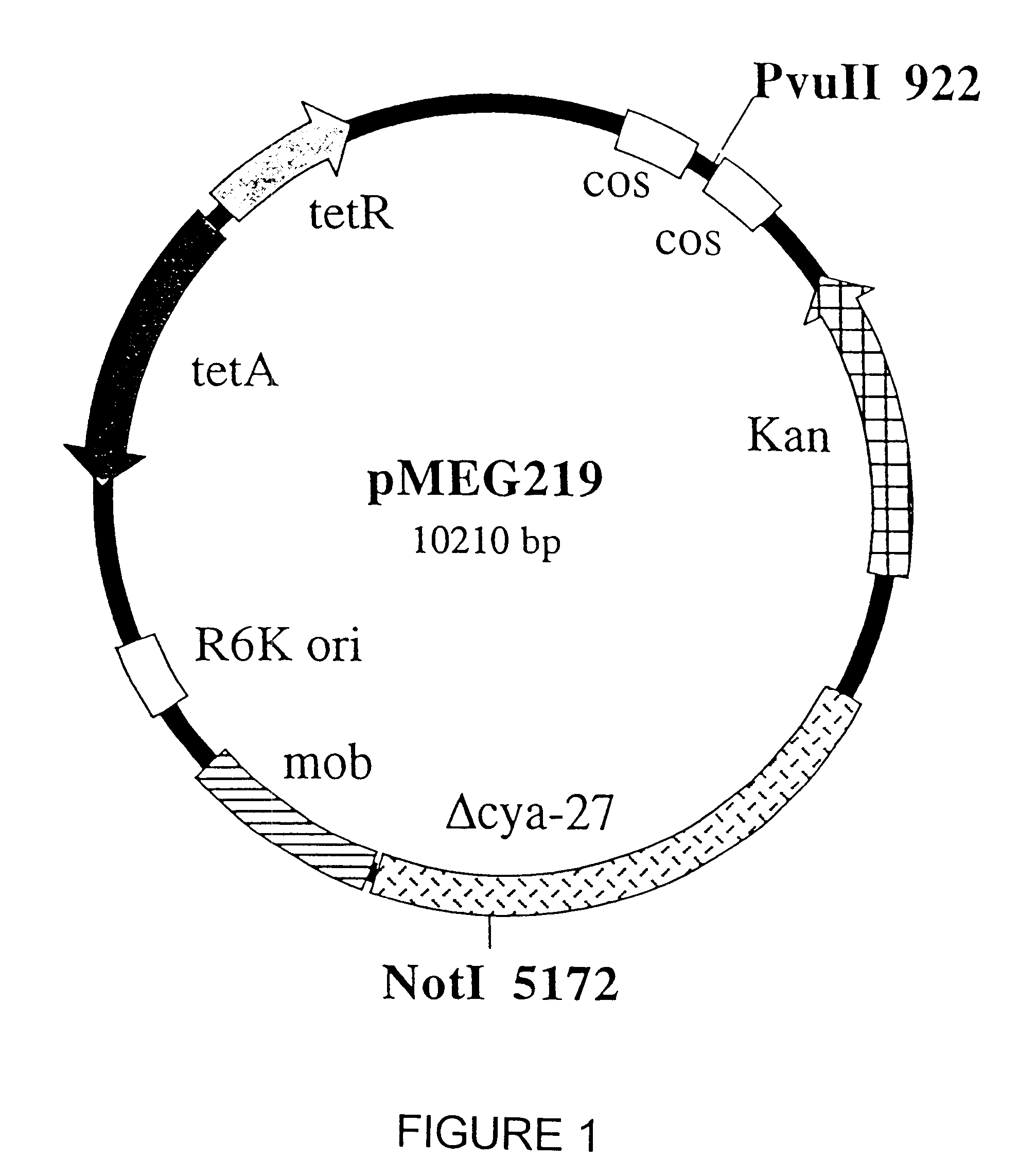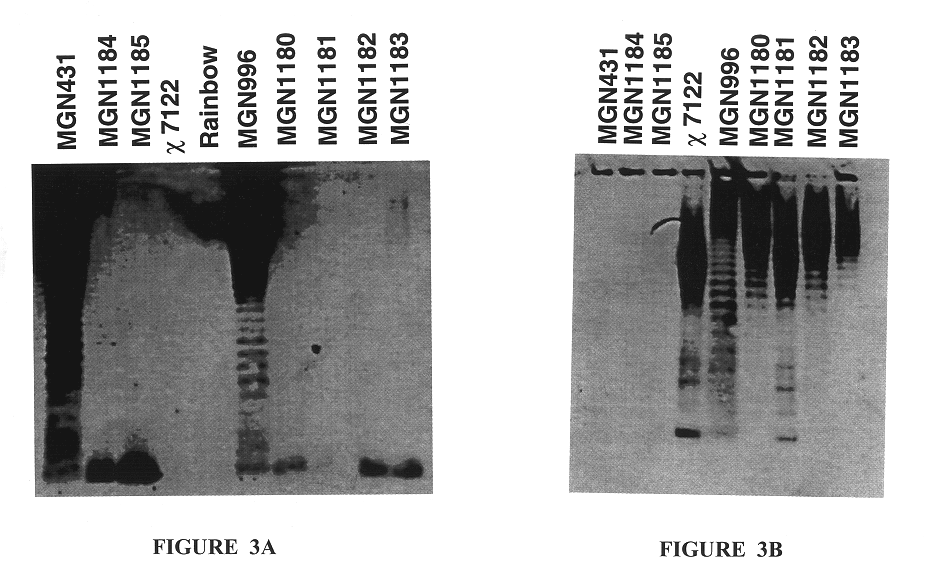Live attenuated salmonella vaccines to control avian pathogens
a technology of attenuated salmonella and vaccines, which is applied in the direction of bacterial antigen ingredients, peptides, medical preparations, etc., can solve the problems of increasing the rate of carcass condemnation of feed, millions of dollars lost to the poultry industry each year, and the death of animals
- Summary
- Abstract
- Description
- Claims
- Application Information
AI Technical Summary
Benefits of technology
Problems solved by technology
Method used
Image
Examples
example 2
This example illustrates the ability of the recombinant S. typhimurium strain MGN996 (.DELTA.cya-28::rfbO78, .DELTA.crp-28, Mot.sup.+) to colonize chickens and protect them from challenge with the wild-type APEC strain .chi.7122.
All chickens used in the experiments described in Examples 2-4 were White Leghorns hatched from fertile eggs from specific-pathogen-free (SPF) chickens obtained from Specific Pathogen Free Avian Services (SPAFAS, Roanoke, Ill.). The eggs were incubated and hatched in a Humidaire incubator / hatcher located in the Department of Biology at Washington University in St. Louis, Mo.
In this experiment birds were vaccinated twice: once at day-of-hatch and again at 14 days of age. Chicks were inoculated at day-of-hatch with 4.6.times.10.sup.6 CFU of MGN996 per chick by coarse spray. Coarse spray vaccination was performed by placing 10-15 chicks into a Plexiglas spray box and delivering the inoculum using a stainless steel Sure Shot Model A sprayer (Milwaukee Sprayer Ma...
example 3
This example illustrates the effect of removing expression of the Salmonella O-antigen on the ability to colonize various chick tissues.
To eliminate expression of group B O-antigen by the recombinant S. typhimurium vaccine strain, a defined deletion was made in the Salmonella rfc gene of MGN996 (.DELTA.cya::O78 .DELTA.crp; Table 1) and MGN43 1 (a defined .DELTA.cya .DELTA.crp deletion control strain, Table 1). Strain MGN996 or MGN431 was mated with strain MGN1142 (Table 1) essentially as described in Example 1 with selection for ampicillin resistance. MGN1142 contains apir-dependent suicide vector carrying an S. typhimurium mutant rfc gene. A transconjugant from each mating was grown overnight in LB broth containing 50 .mu.g / ml ampicillin and plated onto LB agar plates minus NaCl supplemented with 5% sucrose and incubated for 48 hours at room temperature. Isolates were screened for the Rfc phenotype by cross streaking against P22 phage. As discussed above, in this assay mutants defi...
example 4
This example illustrates the efficacy of a recombinant S. typimurium strain which expresses O78 E. coli O-antigen but does not express group B O-antigen in protecting chicks against disease caused by infection with the O78 APEC strain, .chi.7122.
Thirty-five chicks per strain were inoculated at day-of-hatch by oral gavage with either 6.5.times.10.sup.7 CFU of MGN996 (.DELTA.cya-28::rfbO78 .DELTA.crp-28, Mot.sup.+) or 7.7.times.10.sup.7 CFU of MGN1180 (.DELTA.cya-28::rfbO78 .DELTA.crp-28 .DELTA.rfc, Mot.sup.+). Twenty chicks were mock vaccinated with BSG. At day 10, five chicks from each inoculated group were necropsied to assess colonization as described in Example 2. The colonization results were similar to those seen in Experiment 2 (data not shown). On day 14, birds previously inoculated with MGN996 were boosted with 7.4.times.10.sup.7 CFU of MGN996 and birds previously vaccinated with MGN1180 were boosted with 6.4.times.10.sup.7 CFU of MGN1180. All birds were leg banded on day 24...
PUM
| Property | Measurement | Unit |
|---|---|---|
| Fraction | aaaaa | aaaaa |
| Fraction | aaaaa | aaaaa |
| Fraction | aaaaa | aaaaa |
Abstract
Description
Claims
Application Information
 Login to View More
Login to View More - R&D
- Intellectual Property
- Life Sciences
- Materials
- Tech Scout
- Unparalleled Data Quality
- Higher Quality Content
- 60% Fewer Hallucinations
Browse by: Latest US Patents, China's latest patents, Technical Efficacy Thesaurus, Application Domain, Technology Topic, Popular Technical Reports.
© 2025 PatSnap. All rights reserved.Legal|Privacy policy|Modern Slavery Act Transparency Statement|Sitemap|About US| Contact US: help@patsnap.com



